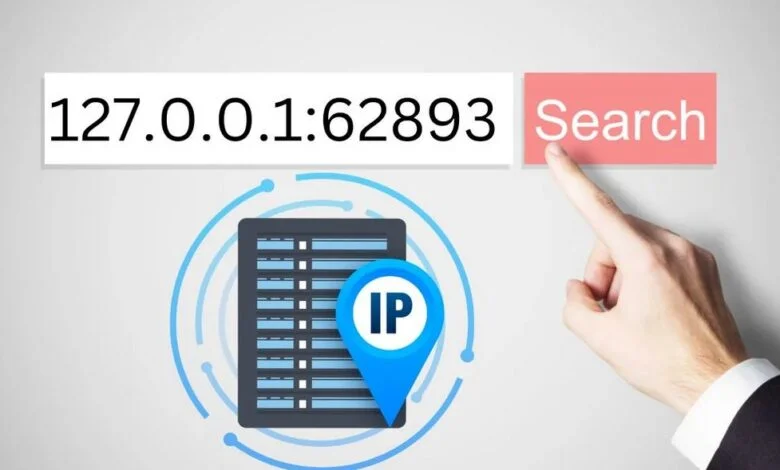Introduction
127.0.0.1:62893 is an IP address and port number. 127.0.0.1 is the localhost or loopback address. This allows a computer to talk to itself without sending data over the internet. This is handy for testing applications locally as it allows developers to simulate network interactions and troubleshoot issues without external interference. 62893 is a specific endpoint for services running on the local machine. It’s not a standard service but can be used by various applications like Memcached for temporary communication.
What is 127.0.0.1:62893?
127.0.0.1 is a loopback interface. When combined with a port like 62893 it’s a unique channel within the same machine. Let’s break it down:
- 127.0.0.1: This is the localhost or loopback address in IPv4. It sends data back to the local device.
- 62893: This is one of 65,535 ports that allows processes to communicate independently of each other on the same device.
This allows developers to simulate real world client-server communication without exposing the system to the outside world or the internet.
127.0.0.1:62893 in Development
Web Development
For web developers 127.0.0.1:62893 is a staging ground. Frameworks like Django, Flask and Node.js set up a temporary server on localhost during development. The port number ensures multiple applications can run at the same time without interference.
For example you have a React app running on 127.0.0.1:3000 and a Flask API on 127.0.0.1:62893. Each app runs independently but shares the same loopback IP.
Testing APIs
APIs are tested on localhost before deployment. Using Postman or cURL developers send requests to the API on 127.0.0.1:62893 to test functionality, debug responses and fine tune performance.
Database Connections
Local databases like MySQL or MongoDB also use localhost connections. By using 127.0.0.1:62893 developers can test secure data queries without exposing to public networks.
How Loopback Works
The loopback mechanism ensures that any traffic sent to 127.0.0.1 never leaves the device. It bypasses network interfaces altogether, saves time and is more secure.
Benefits
- Isolation: Localhost testing isolates the app from the outside world, no interference.
- Speed: Because it’s not going through external routing, data transmission is almost instant.
- Security: Misconfigurations and vulnerabilities are hidden from external threats.
Example
You’re testing a new login system for a web app. Running the app on 127.0.0.1:62893 means no outside interference can compromise the test environment. You can iterate faster and fix issues before you deploy the app.
The Role of Ports in Communication
Port 62893 is one of thousands available for assigning tasks to specific applications. Ports divide traffic between services, allowing multiple applications to run concurrently.
How to Choose a Port
- Dynamic Allocation: Ports above 49152 are dynamically assigned and less likely to conflict with other services.
- Custom Configuration: Developers can specify unused ports manually to avoid conflicts.
Common Port Issues
- Port in Use: If another application is using port 62893, the localhost connection fails. Use tools like netstat to identify and resolve conflicts.
- Firewall Restrictions: Ensure your firewall permits traffic on localhost and the designated port.
Debugging with 127.0.0.1:62893
Common Debugging Scenarios
- Server Not Responding: Check if the server is bound to 127.0.0.1 and listening on 62893.
- Connection Refused: Ensure the application is running and the port is accessible.
- Data Transfer Issues: Inspect logs for errors in the request-response cycle.
Tools for Debugging
- Postman: For testing API endpoints and payloads.
- Wireshark: To analyze data packets in localhost connections.
- Netstat or lsof: To identify active connections on port 62893.
Security Best Practices for Localhost
Although localhost is inherently secure, improper configurations can lead to vulnerabilities.
Tips to Secure 127.0.0.1:62893
- Restrict Public Access: Ensure services bound to 127.0.0.1 are not accidentally exposed to external IPs.
- Use Authentication: Implement passwords or API keys to control access.
- Monitor Logs: Continuously review logs for unauthorized attempts.
The Technical Process Behind Localhost Testing
Step-by-Step Guide
- Set Up the Environment: Install the necessary development tools.
- Run the Application: Start your server on 127.0.0.1:62893 using the framework’s CLI commands.
- Test Functionality: Use tools like Postman or a web browser to access the service.
- Debug Errors: Address errors using IDEs or logging tools.
Conclusion
Understanding and leveraging 127.0.0.1:62893 is fundamental for developers and network engineers. It provides a secure, fast, and isolated environment for testing and debugging, forming the backbone of efficient software development workflows. Whether you’re building web apps, testing APIs, or debugging network issues, this localhost configuration ensures reliability and precision.
Also read: HDMovies4U Hub: What You Need to Know About
FAQs
What is 127.0.0.1:62893 used for?
It’s a localhost address and port used for testing applications or services locally.
How do I resolve port conflicts?
Identify the conflicting service using netstat or lsof, then stop it or reassign your application to a different port.
Can 127.0.0.1 be accessed from another computer?
No, it’s a loopback address specific to the device it’s used on.
Why does my application fail to bind to 127.0.0.1:62893?
This could be due to a port conflict, firewall settings, or the application misconfiguration.
What’s the difference between localhost and 127.0.0.1?
They are functionally the same, but “localhost” resolves to 127.0.0.1 through DNS.
Is port 62893 special?
No, it’s an arbitrary port number used as an example here.







